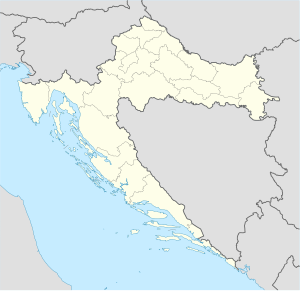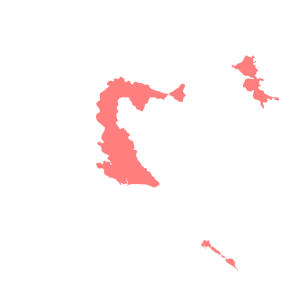
Željko Ražnatović, better known as Arkan, was a Serbian warlord, mobster and head of the Serb paramilitary force called the Serb Volunteer Guard during the Yugoslav Wars, considered one of the most feared and effective paramilitary forces during the wars. His paramilitary unit was responsible for numerous crimes in Eastern Bosnia, including murder, pillaging, rape and ethnic cleansings. Arkan was one of the most celebrated and iconic figures in Serbia during his time.

The Serbian Autonomous Oblast of Krajina or SAO Krajina was a self-proclaimed Serb Autonomous Region (oblast) within modern-day Croatia. The territory consisted of majority-Serbian municipalities of the Republic of Croatia that declared autonomy in October 1990. It was formed as the SAO Kninska Krajina, but, upon inclusion of additional Serb-populated areas, changed its name simply to SAO Krajina. In 1991 the SAO Krajina declared itself the Republic of Serbian Krajina, and subsequently included the other two Serbian SAOs in Croatia, the SAO Western Slavonia and the SAO Eastern Slavonia, Baranja and Western Syrmia.

The Battle of Vukovar was an 87-day siege of Vukovar in eastern Croatia by the Yugoslav People's Army (JNA), supported by various paramilitary forces from Serbia, between August and November 1991. Before the Croatian War of Independence the Baroque town was a prosperous, mixed community of Croats, Serbs and other ethnic groups. As Yugoslavia began to break up, Serbia's President Slobodan Milošević and Croatia's President Franjo Tuđman began pursuing nationalist politics. In 1990, an armed insurrection was started by Croatian Serb militias, supported by the Serbian government and paramilitary groups, who seized control of Serb-populated areas of Croatia. The JNA began to intervene in favour of the rebellion, and conflict broke out in the eastern Croatian region of Slavonia in May 1991. In August, the JNA launched a full-scale attack against Croatian-held territory in eastern Slavonia, including Vukovar.
Operation Swath-10 was a military offensive undertaken by the Croatian Army against the SAO Western Slavonia Territorial Defense Forces on Bilogora Mountain in western Slavonia. Occurring from 31 October to 4 November 1991, during the Croatian War of Independence, the operation was a Croatian victory and its success set the stage for follow-up advances by Croatian forces on Papuk Mountain in Operation Papuk-91 in late November and December. By the end of the year the HV gained control of Papuk, securing transport routes between eastern Slavonia and the rest of Croatia.
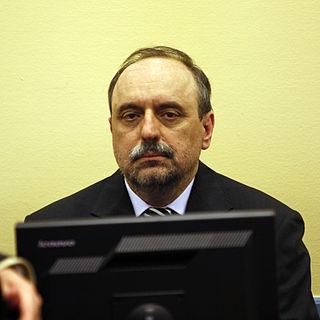
Goran Hadžić was a Croatian Serb politician and President of the self-proclaimed Republic of Serbian Krajina, during the Croatian War of Independence. He was accused of crimes against humanity and of violation of the laws and customs of war by the International Criminal Tribunal for the former Yugoslavia.

Tordinci is a village and a municipality in the Vukovar-Syrmia County in Croatia.
The Lovas killings involved the killing of 70 Croat civilian residents of the village of Lovas between 10 and 18 October 1991, during the Croatian War of Independence. The killings took place during and in the immediate aftermath of the occupation of the village by the Yugoslav People's Army (JNA) supported by Croatian Serb forces and Dušan the Mighty Forces. On 10 October, two days after Croatia declared independence from Yugoslavia. The occupation occurred during the Battle of Vukovar, as the JNA sought to consolidate its control over the area surrounding the city of Vukovar. The killings and abuse of the civilian population continued until 18 October, when troops guarding a group of civilians forced them to walk into a minefield at gunpoint and then opened fire upon them.
The Dalj massacre was the killing of Croats in Dalj, Croatia from 1 August 1991 until June 1992, during the Croatian War of Independence. In addition to civilian victims, the figure includes 20 Croatian policemen, 15 Croatian National Guard troops and four civil defencemen who had been defending the police station and water supply building in the village on 1 August 1991. While some of the policemen and the ZNG troops died in combat, those who surrendered were killed after they became prisoners of war. They tried to fight off an attack by the Croatian Serb SAO Eastern Slavonia, Baranja and Western Syrmia Territorial Defence Forces, supported by the Yugoslav People's Army and the Serb Volunteer Guard paramilitaries. The SAO SBWS was declared an autonomous territory in eastern Croatia following the Battle of Borovo Selo just to the south of Dalj.
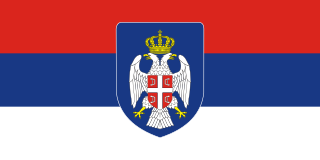
Eastern Slavonia, Baranja and Western Syrmia, commonly abbreviated as Eastern Slavonia, was a short-lived Serb parallel entity in the territory of Croatia along the Danube river.

The Bijeljina massacre involved the killing of civilians by Serb paramilitary groups in Bijeljina on 1–2 April 1992 in the run-up to the Bosnian War. The majority of those killed were Bosniaks. Members of other ethnicities were also killed, such as Serbs deemed disloyal by the local authorities. The killings were committed by a local paramilitary group known as Mirko's Chetniks and by the Serb Volunteer Guard, a Serbia-based paramilitary group led by Željko "Arkan" Ražnatović. The SDG were under the command of the Yugoslav People's Army (JNA), which was controlled by Serbian President Slobodan Milošević.
The Erdut killings were a series of murders of 37 Hungarian and Croat civilians in the village of Erdut, Croatia committed by Croatian Serb forces and Serb Volunteer Guard paramilitaries between November 1991 and June 1992, during the Croatian War of Independence. Twenty-two Hungarians and 15 Croats were killed. The first killings occurred on 10 November 1991, when twelve civilians died. Eight more were killed over the following several days. Five more civilians were killed on 10 December, and another seven on 16 December. Four others were killed on 21 February 1992 and the final one was killed on 3 June. The bodies of these victims were either buried in mass graves or thrown into nearby wells.

The Battle of Osijek was the artillery bombardment of the Croatian city of Osijek by the Yugoslav People's Army (JNA) which took place from August 1991 to June 1992 during the Croatian War of Independence. Shelling peaked in late November and December 1991, then diminished in 1992 after the Vance plan was accepted by the combatants. Airstrikes and attacks by JNA infantry and armored units against targets in the city accompanied the bombardment, which caused approximately 800 deaths and resulted in a large portion of the city's population leaving. Croatian sources estimated that 6,000 artillery shells were fired against Osijek over the period.

Antin is a village located 18 km northwest of Vinkovci in Vukovar-Syrmia County, Croatia. Population 731.
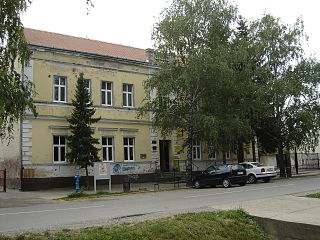
Tenja is a village in eastern Slavonia, Croatia, located just southeast of Osijek. The population is 7,376.
The Varivode massacre was a mass killing that occurred on 28 September 1995 in the village of Varivode, Croatia during the Croatian War of Independence. According to United Nations officials, soldiers of the Croatian Army (HV) and Croatian police killed nine Serb villagers, all of whom were between the ages of 60 and 85. After the war, six former Croatian soldiers were tried for committing crimes in the village, but were all eventually released due to lack of evidence. In 2012, the Supreme Court of Croatia ruled that the Republic of Croatia was responsible for the killings, dubbing the massacre an "act of terrorism," and the following year the municipal court in Knin announced that the Government of Croatia must provide compensation to the children of a couple who were murdered.
Operation Baranja was an aborted offensive of the Croatian Army north of the towns of Belišće and Valpovo, Croatia on 3 April 1992 during the Croatian War of Independence. The offensive quickly gained ground after the HV advanced north of the Drava River into Baranja. The defending force of the Croatian Serb Territorial Defence Force supported by the Yugoslav People's Army artillery were caught unprepared and offered light resistance.
The Tovarnik massacre was the mass murder of Croat civilians by the JNA and other Serb forces on 22 September 1991 in the village of Tovarnik.
The Berak killings was the mass murder of Croat civilians by Serb rebels and paramilitaries from September until December 1991, in the village of Berak, near Vukovar, during the Croatian War of Independence.
Dušan the Mighty was a Serbian paramilitary unit formed in 1991. It was the armed wing of the Serbian National Renewal and volunteer unit. The unit was active in the Yugoslav wars, mainly in Croatia in 1991, and in 1992 it also took part of the Serb assault on Zvornik, Bosnia, and the subsequent massacre of Bosniak civilians in that city. The unit was responsible for the killings of Croatian citizens in Lovas. At the end of the war, three of its members were prosecuted for war crimes.

The Battle of Antunovac was a battle during the Croatian War of Independence. Fought between 20 November and 24 November 1991. It was fought between Croatia, and SAO Eastern Slavonia, Baranja and Western Syrmia which was supported by the Yugoslav People's Army. In the late afternoon of November 24, 1991, Antunovac was captured by the forces of the JNA and rebel Serbs.
